Evening dress fabric
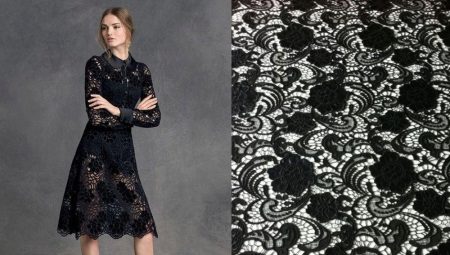
So that the designer does not interfere with the implementation of his creative ideas, in his arsenal there are many fabrics of different colors, textures, and each material has its own structural features, advantages and disadvantages.
Nobody bothers you to use such a variety of fabrics on your own to create your own unique image. And if you have not previously faced such a task as the choice of fabric for an evening dress, then check out the tips from the personal experience of the best tailors and designers.
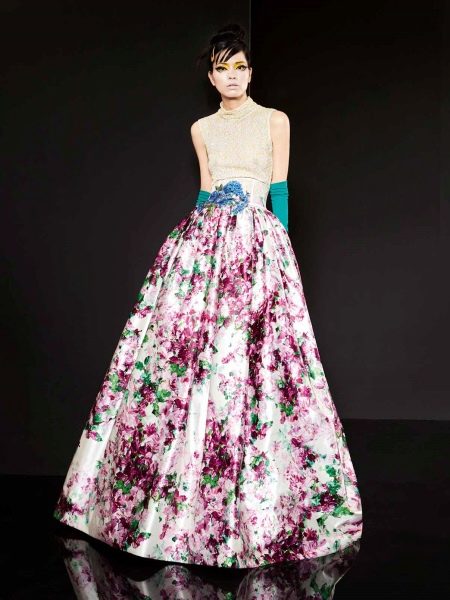
Basic rules
- Certain types of fabrics correspond to each cut and style of evening dress. If you need a model with a falling skirt, many folds and darts, or multi-tiered, then give preference to light and soft fabrics (chiffon, silk, crepe and thin taffeta, soft guipure). Dense fabrics keep their shape well, so they allow you to hide excess volume. The main techniques used are draperies, wide folds, etc. A simple style will look rich if you choose a fabric with a bright pattern, an unusual pattern, decorative elements, velvet and brocade, guipure and satin gabardine are also suitable. Organza is perfect for lush outfits.
- The material is chosen taking into account the celebration, the season and the purpose of the dress, for example, going to the theater, a date, a party, an official celebration.
- Feel free to mix and match fabrics. Differences in texture and density will allow you to create a beautiful original dress. Knowing the properties of fabrics and having an excellent taste, you can achieve the versatility of an outfit in which you can safely go to work and to a party.
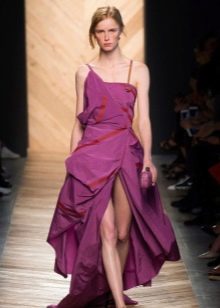

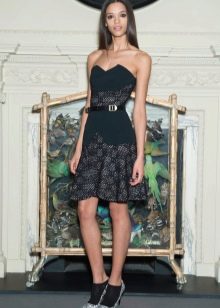
Fabrics for the warm season
In spring and summer, when the earth wakes up and comes to life, together with it I want to quickly get rid of the gray and cold days. Then the choice usually falls on flying and delicate, even translucent fabrics with all kinds of prints and shine.
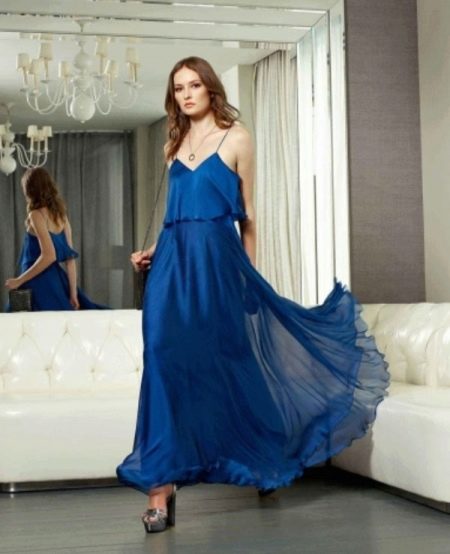
Atlas
Satin is a traditional fabric for a festive evening dress. It captivates with the shine emanating from almost invisible fibers, which makes it look rich and luxurious.
The atlas is different in density and composition, it is divided into silk, polyester and acetate.
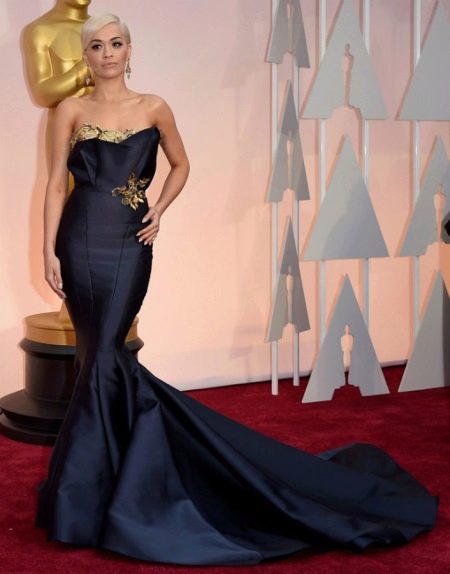
Satin silk is not afraid of experiments and looks harmoniously in a duet with other matte, lace and transparent fabrics. Since the material is quite dense, it is often decorated with pearls, crystals, embroidery and other elements.
There is no style that cannot be sewn from this wonderful fabric.

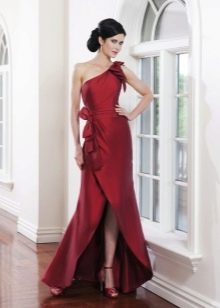
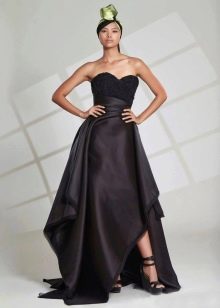
Silk
"A pearl among materials" - this is what silk is called. It is beautiful, soft and pliable, smooth and shiny, durable and hygienic. Dresses are created luxurious, feminine and elegant. Created from natural silk threads, it warms in cold weather and cools in hot weather.
The only drawback is that it wrinkles. But if artificial fibers are added to the material, then silk is not so whimsical. Natural and artificial silk can be distinguished without even touching it. The difference can be seen in the overflow of color and gloss.
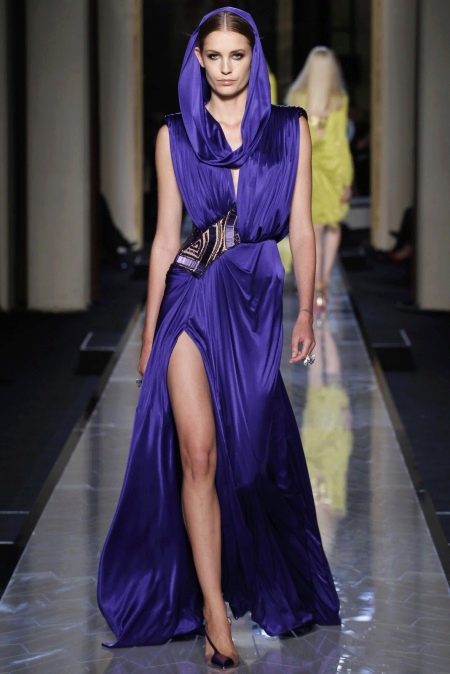
In models with a complex cut, folds and gathers fit perfectly and look beautiful. Despite the plasticity of silk, it is difficult to work with. It can be difficult for an experienced tailor to sew in a collar or sleeves correctly, sew on cuffs or make a buttonhole.
This is explained by the fact that a slippery surface can make cutting and sewing difficult. But simple models with sleeves or with an American armhole can be sewn even with minimal experience.
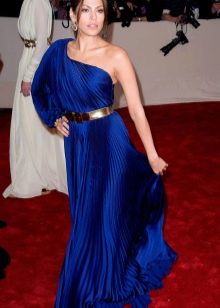
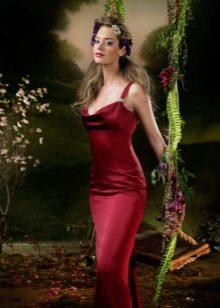

There is a wide range of silk fabrics such as silk crepe, chiffon, muslin. Elastane is added for stretching.
Silk dresses on the floor with a slit, summer flying a-silhouette, mermaid, straight cut with drapery on the bodice look equally beautiful.
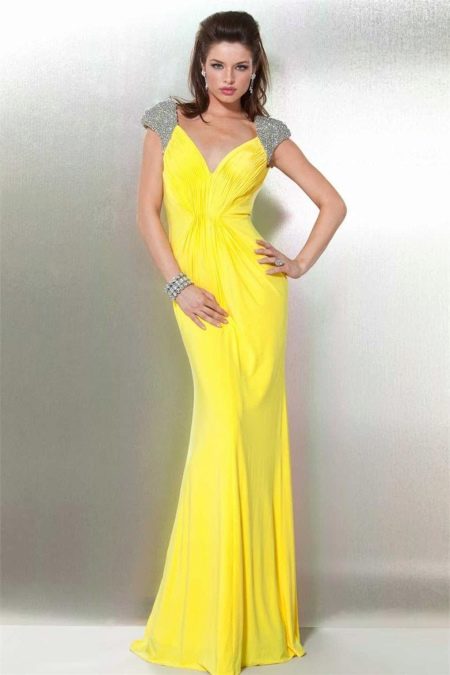
Lace
Lace is a favorite in evening dresses for a long time. Intricate patterns highlight the figure's dignity. The image becomes feminine, romantic.
Guipure, chantaille, alison, Vologda, tatting, Irish - all kinds are countless, just as not to list all colors and shades. Motives and patterns are so diverse that it is very easy to be unique.
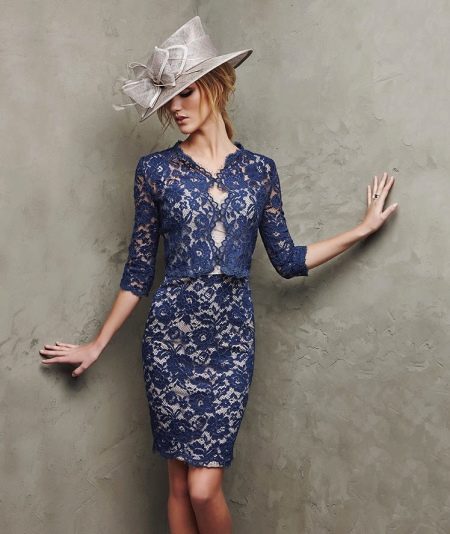
When choosing a lace fabric, consider details such as:
- web width. It is usually standard;
- the density of the openwork pattern. The fabric is delicate and thin. In this case, it is not recommended to use it in places that are most susceptible to tearing. Sometimes the fabric is dense, here it should be borne in mind that it drapes poorly;
- decor (embroidery of the canvas with beads and sequins). In places where fabric is sewn, decorative elements must be removed;
- in the places of cuts, some openwork fabric or braid tends to bloom, so you should purchase a little more.
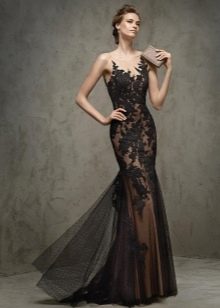
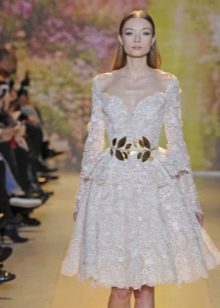
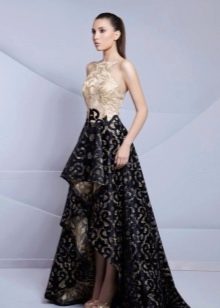
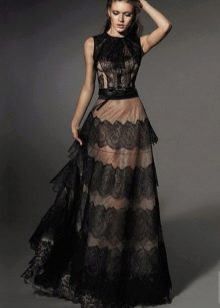
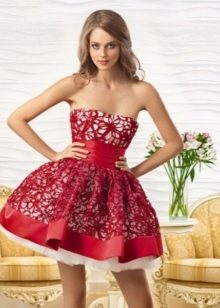
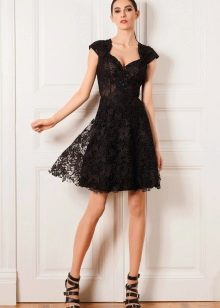
Cold season fabrics
The division of evening fabrics into cold and warm seasons is, of course, conditional. This is about the relevance of the material in a particular season. Satin and silk are quite versatile fabrics and are suitable for winter celebrations if the linings are made of thick fabrics. At the same time, the brocade and velvet presented below will look rather strange on a girl on a summer evening.
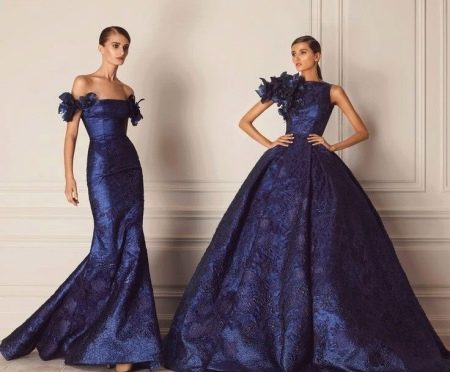
Brocade
Nothing suits the cold evenings better than brocade. It is a rich fabric with a characteristic sheen and usually a two-sided floral pattern, which is convenient for combining or finishing details. It works well with oriental dresses. The only drawback is that it crumbles heavily.
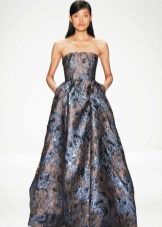
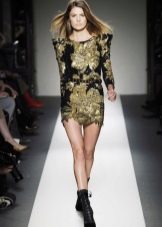
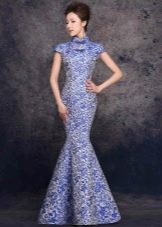
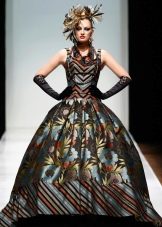
Taffeta
With a glossy overflow, the thin taffeta fabric is very durable and dense, plastic. It is draped with rather rigid folds. Sometimes taffeta is thin and dense.Dense holds its shape and emphasizes the silhouette in the best way.
From taffeta, you can sew a straight evening dress with a peplum, American armhole or voluminous decor, as well as a fluffy dress.
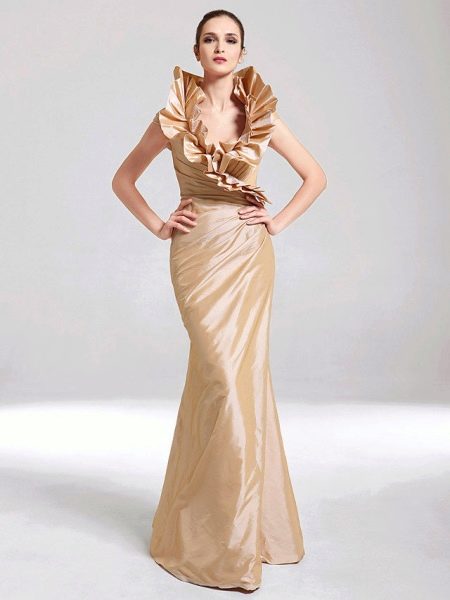
Velvet
For a winter baroque evening dress, velvet is the perfect fabric. It contains luxury, pomp and grace. Dresses are usually sewn in a simple silhouette to fit the figure with the least number of seams and darts. Velvet does not tolerate finishing lines on the details.
Sometimes it is based on cotton or silk, viscose with elastane is added for elasticity.
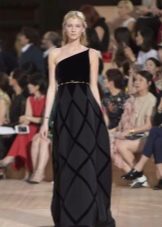

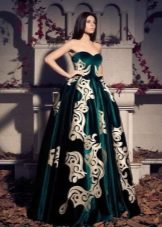
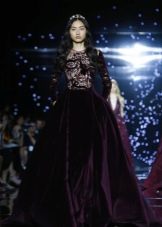
Translucent fabrics
The lightness of the image, a certain sexuality and mystery are provided by translucent fabrics. These include organza, chiffon varieties, georgette and veil. They drape well, therefore they are used as a decorative design for dresses, and at the same time they create fluffy petticoats from them.
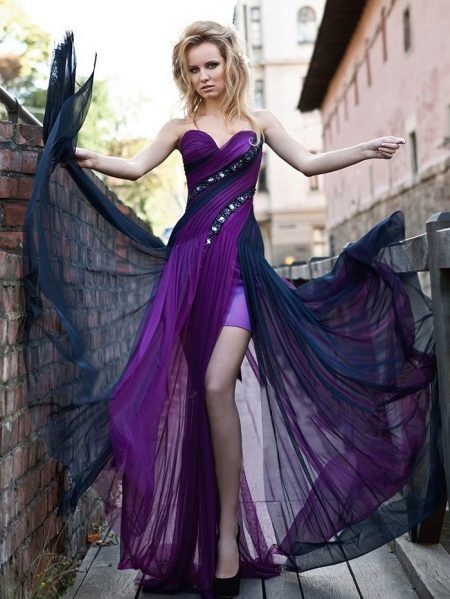
Chiffon
Translucent and lightweight chiffon is somewhat similar to a veil. It belongs to silk fabrics and has many varieties. They are different in the density of the threads and the weaving of the fabric.
Chiffon is used for sewing summer evening dresses, flying and practically not weighty. They are mostly decorated with drapery, which allows you to stunningly emphasize the curves of the body and at the same time give the necessary volume in the right places.
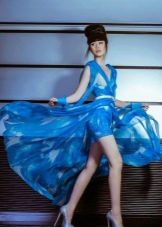
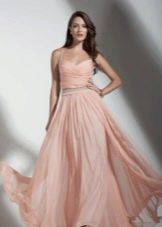
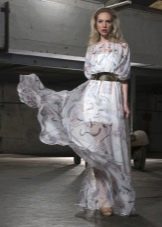
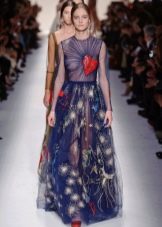
When choosing a fabric, look at its texture. At your choice, a matte texture with a silk shine and a moire pattern.
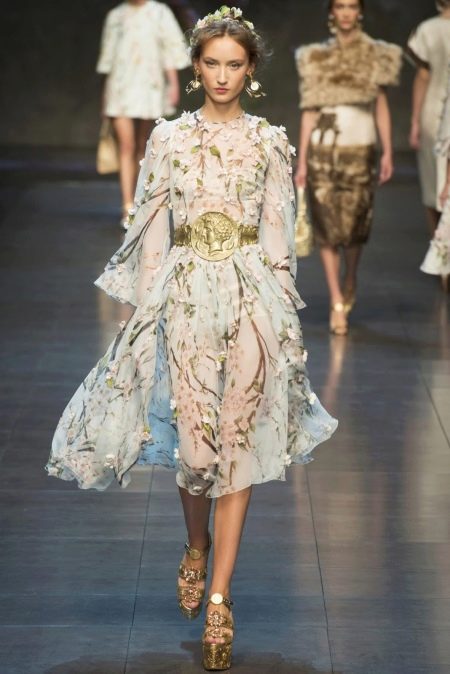
Organza
Among translucent fabrics, very thin gas with a modest sheen and overflow is no less popular for sewing spring-summer outfits. It is made from viscose, silk and polyester. Therefore, organza is characterized by rigidity and preservation of its original shape.
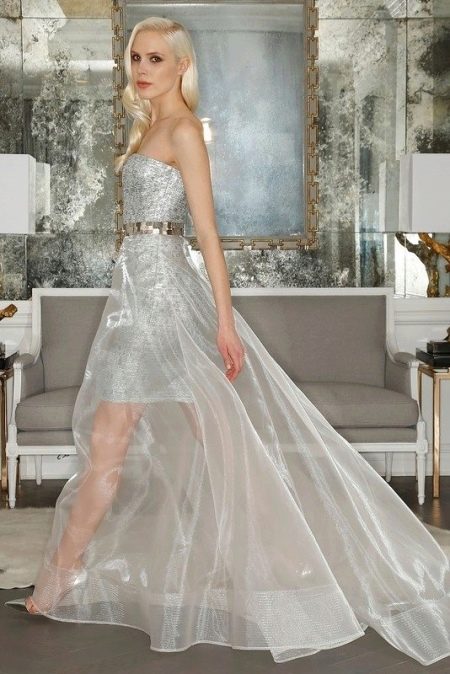
The fabric drapes well. Use it to decorate the top layer of a dress. Airy sleeves, ruffles and frills, flounces and high collars are created from the same organza. It is also amazing in that a pattern is created on it using printing and embroidery.
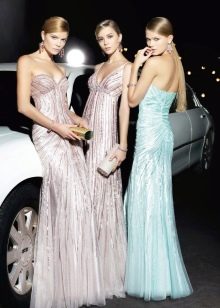
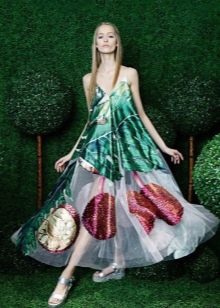
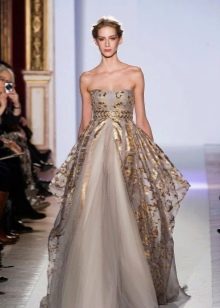
Fatin
Synthetic mesh is used primarily for petticoats. Sleeves are sewn from soft mesh and inserts are made on the neckline.
Elastic and well-shaped, it contributes to giving the desired volume. Also, tulle does not wrinkle or get dirty. But it melts easily and is non-hygroscopic, so it is advisable to sew a petticoat from natural fabrics.
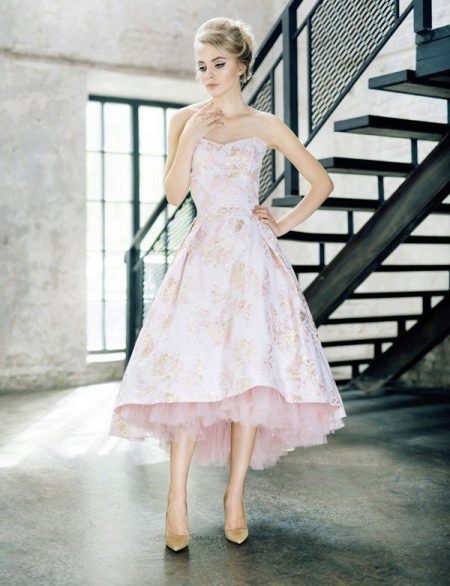
Fatin is interesting for its multicolor nature. An unlimited number of colors can be used in one outfit. At the same time, the more fabric is used for the skirt, the more interesting it looks.
The mesh lends itself to decoration. They embroider on it, sew on lace, do spraying, decorate with rhinestones and sequins. When choosing such a fabric, you need to take into account that the cut should be simple, for example, a sheath dress with a slit, and decorate the boat neckline with a soft mesh. The image will be elegant and will not yield to the expensive lace model.

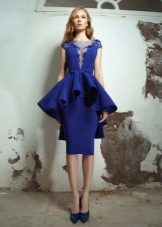
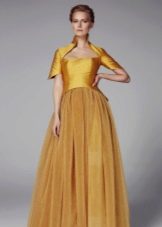
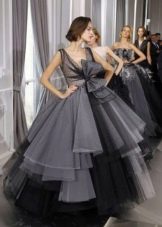
Lining fabrics
In order for the product to have a branded look, a lining is used. It is then designed to mask various darts and seams on the seamy side. And so that the seams are strong and the shape of the dress remains preserved, and the main fabric does not sag under the weight of beads and sequins, spacers are used.
The choice of material for the lining is very diverse. In summer, light, soft and breathable materials are preferred. Organza is suitable for a transparent evening dress.
Both the lining and the spacer are cut out with the base fabric. And then they connect together.
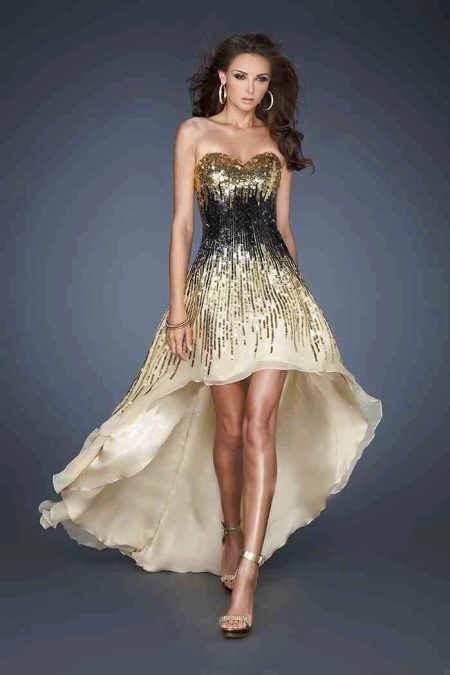
We have briefly reviewed the basic fabrics that are popular in evening wear. Carefully approach the choice of material, do not save on time and cost, and then you will be guaranteed a perfect evening dress.









For those who do not have the skill of sewing, I advise you not to start with fine fabrics. It is difficult to work with them.